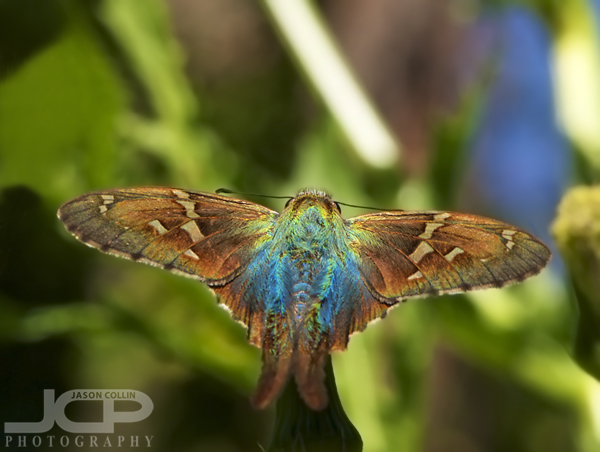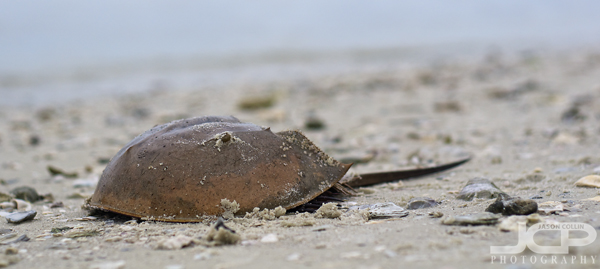 Something small will emerge in Boyd Hill Nature Preserve - Nikon D300 with Nikkor AF-S 105mm VR Micro @ f/11 ISO 200 1/40th tripod mounted with cable release Strobist: Nikon SB-800 Speedlight @ 1/16th power handheld to frame left-frontBoyd Hill Nature Preserve is less than twenty minutes from my front door, but in nearly three years I have never visited it. This is mostly due to the fact the park does not allow dogs and I prefer to visit such places with beloved puppy, Kiki. However, I was feeling restless today and could not concentrate well so thought this was a chance to go out and just make some photographs for my own personal enjoyment wiht just me and my tripod.
Something small will emerge in Boyd Hill Nature Preserve - Nikon D300 with Nikkor AF-S 105mm VR Micro @ f/11 ISO 200 1/40th tripod mounted with cable release Strobist: Nikon SB-800 Speedlight @ 1/16th power handheld to frame left-frontBoyd Hill Nature Preserve is less than twenty minutes from my front door, but in nearly three years I have never visited it. This is mostly due to the fact the park does not allow dogs and I prefer to visit such places with beloved puppy, Kiki. However, I was feeling restless today and could not concentrate well so thought this was a chance to go out and just make some photographs for my own personal enjoyment wiht just me and my tripod.
 Small green leaf in Boyd Hill Nature Preserve - Nikon D300 with Nikkor AF-S 105mm VR Micro @ f/5.6 ISO 200 1/100th tripod mounted with cable release Strobist: Nikon SB-800 Speedlight @ 1/16th power handheld to frame left-frontI decided before I stepped out the door to only bring my trusty macro lens, the Nikkor AF-S 105mm VR micro f/2.8G. I also decided to work the entire time from on my Induro CT214 tripod. I highly recommend approaching personal photography projects in this way. For the first ten minutes walking in the forest I just observed, camera and tripod still in their bags. I did not want to spend the entire time behind the lens.
Small green leaf in Boyd Hill Nature Preserve - Nikon D300 with Nikkor AF-S 105mm VR Micro @ f/5.6 ISO 200 1/100th tripod mounted with cable release Strobist: Nikon SB-800 Speedlight @ 1/16th power handheld to frame left-frontI decided before I stepped out the door to only bring my trusty macro lens, the Nikkor AF-S 105mm VR micro f/2.8G. I also decided to work the entire time from on my Induro CT214 tripod. I highly recommend approaching personal photography projects in this way. For the first ten minutes walking in the forest I just observed, camera and tripod still in their bags. I did not want to spend the entire time behind the lens.
 Lady bug in Boyd Hill Nature Preserve - Nikon D300 with Nikkor AF-S 105mm VR Micro @ f/22 ISO 200 1/60th tripod mounted with cable release Strobist: Nikon SB-800 Speedlight @ 1/16th power handheld to frame left-frontI came across some flowering plants which were a busy intersection for a variety of insects. There was one lady bug tucked away in some leaves perhaps napping. The challenge with macro photography in the field is that things move. As you can see I used f/22 and still was working with a crazy shallow DoF due to the properties of the macro lens. Therefore, even a 1 millimeter sway in the wind by the plant can throw off a carefully calculated manual focus on a subject. I recommend picking a day with no wind for macro photography.
Lady bug in Boyd Hill Nature Preserve - Nikon D300 with Nikkor AF-S 105mm VR Micro @ f/22 ISO 200 1/60th tripod mounted with cable release Strobist: Nikon SB-800 Speedlight @ 1/16th power handheld to frame left-frontI came across some flowering plants which were a busy intersection for a variety of insects. There was one lady bug tucked away in some leaves perhaps napping. The challenge with macro photography in the field is that things move. As you can see I used f/22 and still was working with a crazy shallow DoF due to the properties of the macro lens. Therefore, even a 1 millimeter sway in the wind by the plant can throw off a carefully calculated manual focus on a subject. I recommend picking a day with no wind for macro photography.
 A small relative of Mothra's perhaps in Boyd Hill Nature Preserve - Nikon D300 with Nikkor AF-S 105mm VR Micro @ f/22 ISO 200 1/60th tripod mounted with cable releaseThere was a monarch butterfly proudly fluttering about, as well as a gulf fritillary butterfly, but only the above moth was willing to stay put long enough to be photographed.
A small relative of Mothra's perhaps in Boyd Hill Nature Preserve - Nikon D300 with Nikkor AF-S 105mm VR Micro @ f/22 ISO 200 1/60th tripod mounted with cable releaseThere was a monarch butterfly proudly fluttering about, as well as a gulf fritillary butterfly, but only the above moth was willing to stay put long enough to be photographed.
It was a pleasant time in Boyd Hill Nature Preserve. Admission is $3 and you are not allowed to bring any food or drink on the trails. Visit their official website for more details.









